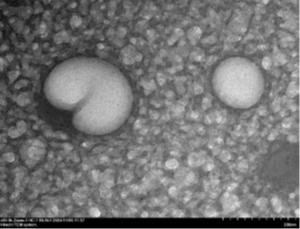

Novel Influenza D Virus Vaccine Strategy
University of Pittsburgh researchers have developed a novel single-cycle influenza D virus (IDV) vaccine strategy. This approach uses a mutant virus that is unable to assemble after it enters the cells and can lead to a strong immune response safely without causing disease. This single-cycle vaccine could be safe and protect against IDV in cattle, swine, humans and other species, potentially reducing the risk of a global public health crisis and future pandemics.

Description
IDV is predominantly found in cattle causing respiratory symptoms. IDV has also been detected in swine, goats, sheep, camels, horses, buffalo, deer, and humans. To date, no direct evidence of marked illness in humans has been reported; however, IDV has the potential to adapt or evolve into a more virulent form posing a potential risk to human and animal health. This threat to public health requires vaccines and other treatment strategies to be in place should a new strain with a greater pathogenicity and or transmissibility were to emerge. A mutant virus (M-null IDV) unable to express M1 and DM2 matrix proteins vital for virus assembly and release has been developed. The M-null IDV construct only undergoes single-cycle replication and could provide a novel vaccination strategy against IDV in humans and animals.Applications
• Animal vaccination against influenza D virus• Human vaccination against influenza D virus
• Novel vaccination strategy for other infectious diseases
Advantages
To date, no vaccine against IDV exists for use in humans or animals. There is increasing evidence that IDV is rapidly evolving and may pose a growing threat to public health and a pressing need to develop a safe and effective vaccine.M-null IDV is a mutant IDV virus which lacks the ability to express the matrix proteins M1 and DM2, accomplished by replacing their AUG start codons with AAC in the coding sequence. The absence of matrix proteins ensures M-null is a single-cycle vaccine and safely induces an immune response. To ensure M-null IDV can be replicated for production, the RNA genome of M-null IDV maintains the 5’ and 3’ untranslated regions (UTRs) and M-null IDV will assemble when in the presence of external matrix proteins.